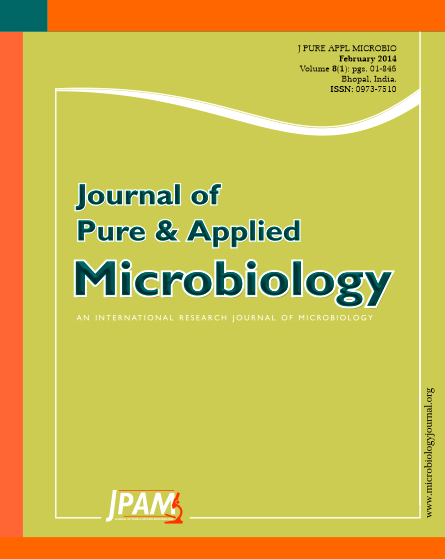A Gram-positive bacillus designated as strain whb27 with high esterase hydrolysis activity was screening from 35 strains of moderately halophilic bacteria isolated from brine and sediment of saltern in Weihai, China. Phenotypic characterization and phylogenetic analysis based on 16S rDNA sequence comparison indicated that the strain was Halobacillus trueperi. Whb27 grew optimally at 7% NaCl, pH 7.5 and 28°C. A halophilic esterase was purified to homogeneity from the crude extract of whb27 by ammonium sulphate fractionation followed by ion exchange and gel permeation chromatography, with a 42-fold purification. The molecular mass of the enzyme was about 35 kDa as assessed by polyacrylamide gel electrophoresis. The enzyme showed maximum activity in the presence of 2.5M NaCl. The optimum temperature and pH were 42°C and 8.0, respectively. The Ba2+ and Fe2+ ions inhibited the activity of the esterase while Ca2+, Mn2+ and Zn2+ ions stimulated its activity. In the presence of EDTA, SDS, DMSO, glycol and acetone, the esterase still displayed some activity, but the activity could be inhibited significantly by phenyl methyl sulphonyl fluoride (PMSF). One interesting point is that organic solvents like ethanol, glycerol, propylene glycol, PEG4000 stabilized or enhanced enzymatic activity, making the enzyme very useful in some industrial process.
Halophile, Halobacillus trueperi, Esterase, Purification, Characterization
© The Author(s) 2014. Open Access. This article is distributed under the terms of the Creative Commons Attribution 4.0 International License which permits unrestricted use, sharing, distribution, and reproduction in any medium, provided you give appropriate credit to the original author(s) and the source, provide a link to the Creative Commons license, and indicate if changes were made.


